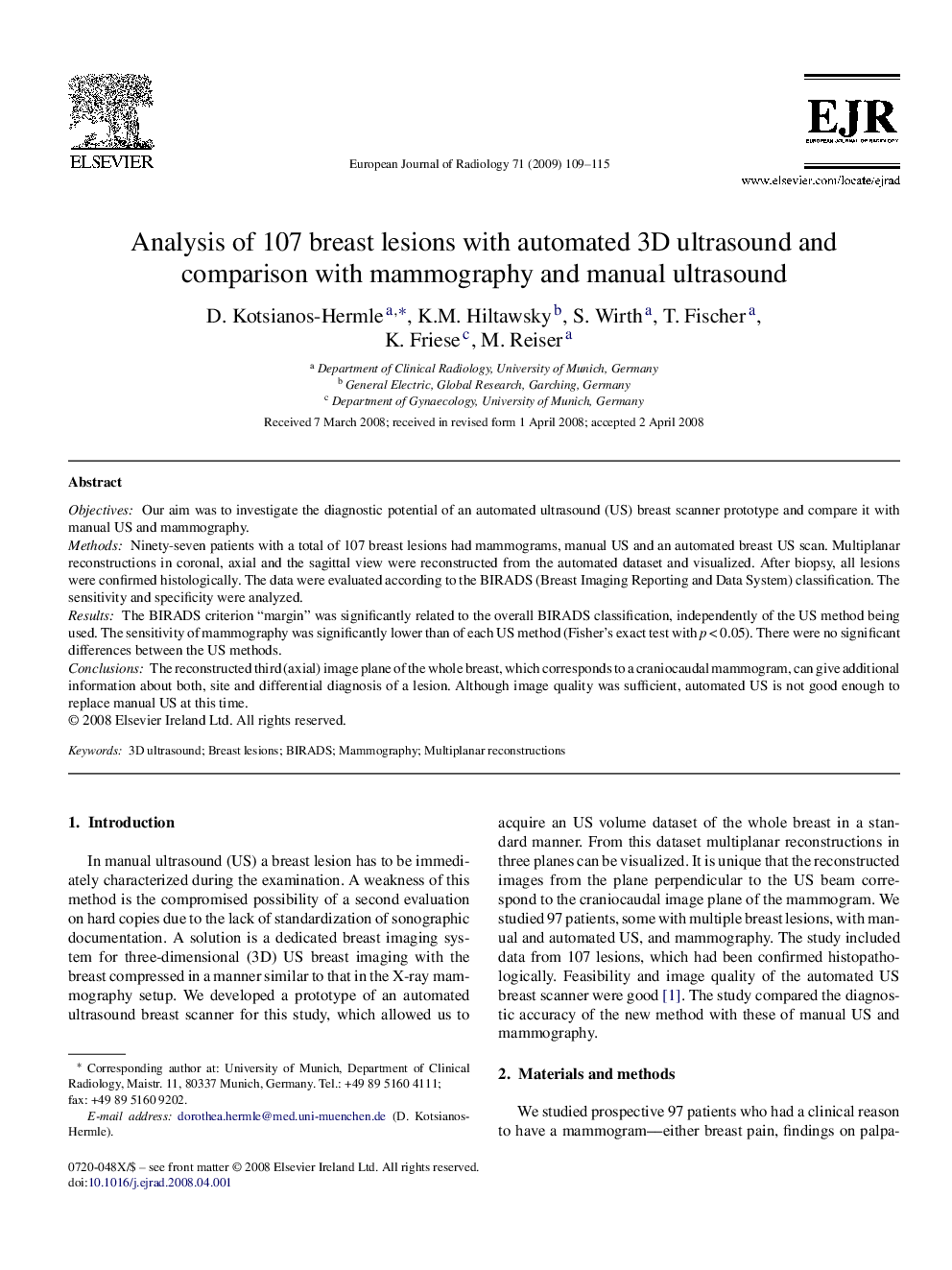| کد مقاله | کد نشریه | سال انتشار | مقاله انگلیسی | نسخه تمام متن |
|---|---|---|---|---|
| 4226894 | 1609825 | 2009 | 7 صفحه PDF | دانلود رایگان |

ObjectivesOur aim was to investigate the diagnostic potential of an automated ultrasound (US) breast scanner prototype and compare it with manual US and mammography.MethodsNinety-seven patients with a total of 107 breast lesions had mammograms, manual US and an automated breast US scan. Multiplanar reconstructions in coronal, axial and the sagittal view were reconstructed from the automated dataset and visualized. After biopsy, all lesions were confirmed histologically. The data were evaluated according to the BIRADS (Breast Imaging Reporting and Data System) classification. The sensitivity and specificity were analyzed.ResultsThe BIRADS criterion “margin” was significantly related to the overall BIRADS classification, independently of the US method being used. The sensitivity of mammography was significantly lower than of each US method (Fisher's exact test with p < 0.05). There were no significant differences between the US methods.ConclusionsThe reconstructed third (axial) image plane of the whole breast, which corresponds to a craniocaudal mammogram, can give additional information about both, site and differential diagnosis of a lesion. Although image quality was sufficient, automated US is not good enough to replace manual US at this time.
Journal: European Journal of Radiology - Volume 71, Issue 1, July 2009, Pages 109–115